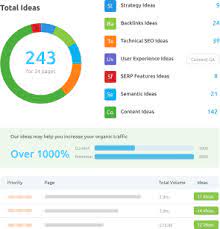The Importance of Univariate Data Analysis
Univariate data analysis is a fundamental statistical technique that involves the examination and interpretation of a single variable at a time. This method provides valuable insights into the characteristics and patterns of individual variables within a dataset, helping researchers and analysts to understand the distribution, central tendency, and variability of the data.
Key Components of Univariate Data Analysis
When conducting univariate data analysis, several key components are typically considered:
- Descriptive Statistics: Descriptive statistics such as mean, median, mode, standard deviation, and range are calculated to summarise the central tendency and dispersion of the data.
- Data Visualization: Graphical representations like histograms, box plots, and pie charts are used to visually depict the distribution of the data.
- Data Transformation: Data may be transformed to meet statistical assumptions or improve interpretability.
- Hypothesis Testing: Univariate analysis can also involve hypothesis testing to determine if there are significant differences or relationships within the variable being studied.
Applications of Univariate Data Analysis
Univariate data analysis is widely used across various fields for different purposes:
- Economics: Analyzing income distribution or price fluctuations.
- Healthcare: Studying patient demographics or disease prevalence.
- Marketing: Examining customer preferences or sales trends.
- Social Sciences: Investigating survey responses or demographic characteristics.
The Benefits of Univariate Data Analysis
The benefits of univariate data analysis include:
- Data Understanding: It provides a clear understanding of individual variables before proceeding to more complex analyses.
- Data Quality Assessment: Helps identify outliers, errors, or inconsistencies in the dataset.
- Trend Identification: Reveals trends and patterns that may not be apparent from raw data alone.
- Data-driven Decision Making: Enables informed decision-making based on empirical evidence.
Essential Tips for Effective Univariate Data Analysis: A Comprehensive Guide
- 1. Start by understanding the nature and characteristics of the data.
- 2. Calculate basic descriptive statistics such as mean, median, mode, range, and standard deviation.
- 3. Create visual representations like histograms, box plots, and scatter plots to explore the data distribution.
- 4. Identify outliers in the dataset that may affect your analysis results.
- 5. Examine the skewness and kurtosis of the data to understand its shape and symmetry.
- 6. Conduct hypothesis testing to make inferences about the population based on sample data.
- 7. Use measures of central tendency and dispersion to summarise key aspects of the data set.
- 8. Consider transforming variables if necessary to meet assumptions of statistical tests.
- 9. Document your findings clearly and interpret them in relation to your research objectives.
1. Start by understanding the nature and characteristics of the data.
To effectively conduct univariate data analysis, it is crucial to begin by comprehensively understanding the nature and characteristics of the data under examination. By delving into the specifics of the dataset, including its distribution, central tendency, and variability, analysts can gain valuable insights into how the variable behaves on its own. This initial step lays a strong foundation for subsequent analyses, enabling researchers to make informed decisions about which statistical methods and techniques are most appropriate for deriving meaningful conclusions from the data.
2. Calculate basic descriptive statistics such as mean, median, mode, range, and standard deviation.
When conducting univariate data analysis, it is essential to calculate basic descriptive statistics to gain insights into the central tendency and variability of the dataset. By computing measures such as the mean, median, mode, range, and standard deviation, analysts can summarise the distribution of the data and identify any outliers or patterns that may influence further analysis. These statistics provide a foundational understanding of the variable under study, aiding in decision-making processes and hypothesis testing within the research or analytical context.
3. Create visual representations like histograms, box plots, and scatter plots to explore the data distribution.
Creating visual representations such as histograms, box plots, and scatter plots is a crucial tip in univariate data analysis. These graphical tools offer a comprehensive insight into the distribution of the data, allowing analysts to identify patterns, outliers, and trends more effectively. Histograms provide a visual depiction of the frequency distribution of values, while box plots reveal central tendencies and variability. Scatter plots, on the other hand, help in understanding relationships and correlations between variables. By utilising these visual aids, analysts can gain a deeper understanding of the data structure and make more informed decisions based on their observations.
4. Identify outliers in the dataset that may affect your analysis results.
Identifying outliers in the dataset is a crucial tip in univariate data analysis as they can significantly impact the results of your analysis. Outliers are data points that deviate significantly from the rest of the dataset and can skew statistical measures such as the mean and standard deviation. By identifying and addressing outliers, analysts can ensure the accuracy and reliability of their findings, leading to more robust conclusions and insights derived from the data.
5. Examine the skewness and kurtosis of the data to understand its shape and symmetry.
When conducting univariate data analysis, it is essential to examine the skewness and kurtosis of the data to gain insights into its shape and symmetry. Skewness measures the asymmetry of the data distribution, indicating whether the data is skewed to the left or right. Kurtosis, on the other hand, assesses the peakedness or flatness of the distribution. By analysing these statistical properties, researchers can better understand how the data is distributed and make informed decisions about subsequent analyses or interpretations.
6. Conduct hypothesis testing to make inferences about the population based on sample data.
When performing univariate data analysis, it is essential to conduct hypothesis testing to draw meaningful inferences about the population using sample data. Hypothesis testing allows researchers and analysts to assess whether observed differences or patterns in a single variable are statistically significant or simply due to random variation. By formulating null and alternative hypotheses and applying statistical tests, such as t-tests or chi-square tests, researchers can determine the likelihood of obtaining the observed results if the null hypothesis were true. This rigorous approach helps validate findings and provides a solid foundation for making informed decisions based on the analysed data.
7. Use measures of central tendency and dispersion to summarise key aspects of the data set.
When conducting univariate data analysis, it is crucial to utilise measures of central tendency and dispersion to summarise key aspects of the dataset effectively. Measures such as the mean, median, and mode provide insights into the typical or central value of the data, while measures of dispersion like standard deviation and range indicate the variability or spread around this central value. By incorporating these statistical metrics, analysts can gain a comprehensive understanding of the distribution and variability within the dataset, enabling them to make informed decisions and draw meaningful conclusions based on the data at hand.
8. Consider transforming variables if necessary to meet assumptions of statistical tests.
When conducting univariate data analysis, it is essential to consider transforming variables if needed to meet the assumptions of statistical tests. Transforming variables can help ensure that the data conforms to the requirements of the chosen statistical test, such as normality or homoscedasticity. By transforming variables appropriately, researchers can improve the reliability and accuracy of their analysis results, leading to more robust conclusions and insights drawn from the data.
9. Document your findings clearly and interpret them in relation to your research objectives.
When conducting univariate data analysis, it is crucial to document your findings clearly and interpret them in relation to your research objectives. By documenting the analysis process and results comprehensively, you create a transparent record that allows others to understand your methodology and conclusions. Clear documentation also helps you track the steps taken and ensures reproducibility of the analysis. Interpreting the findings in the context of your research objectives enables you to draw meaningful insights and make informed decisions based on the data analysed. This practice enhances the credibility and validity of your research outcomes, guiding you towards achieving your research goals effectively.





